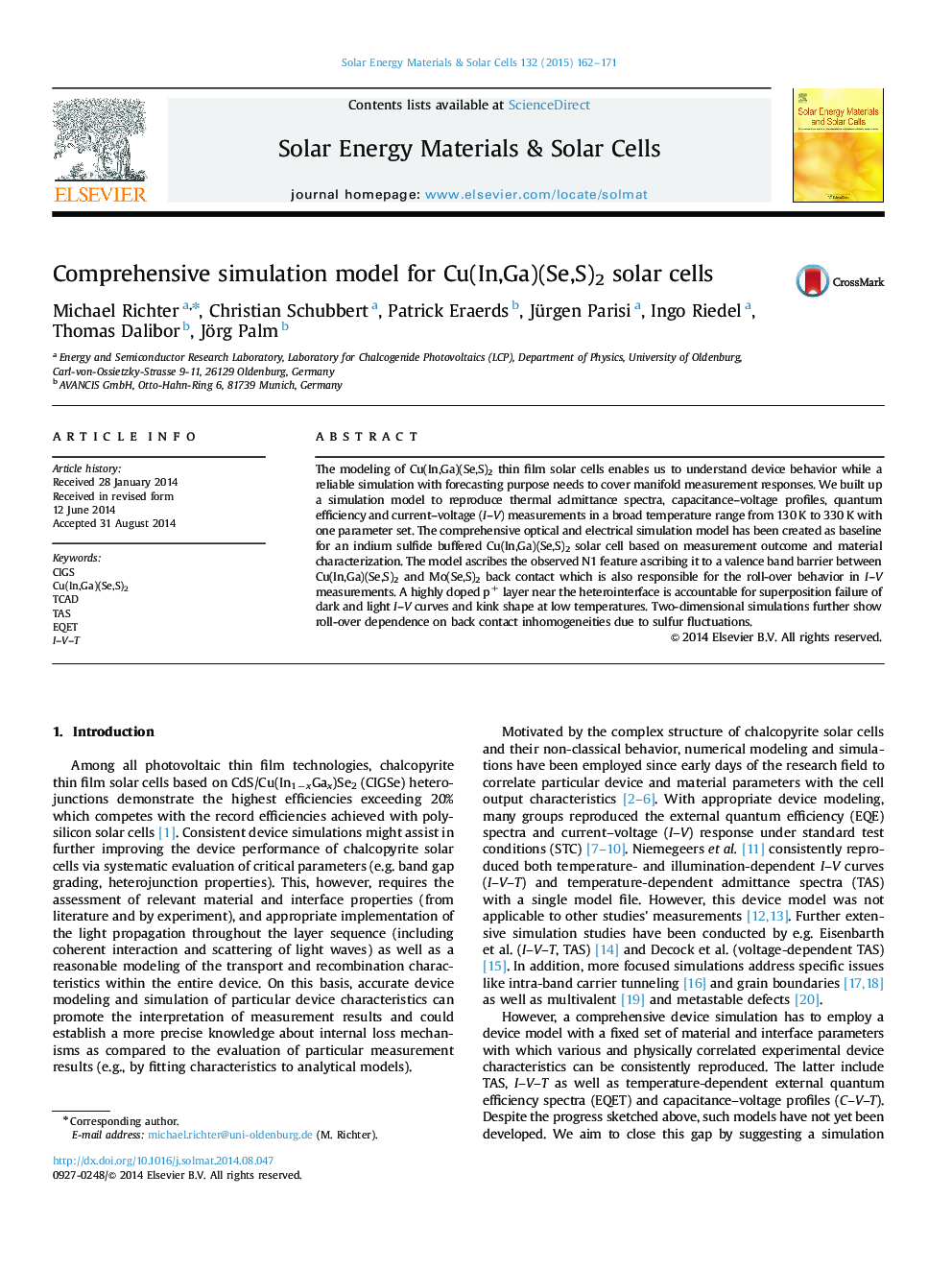| Article ID | Journal | Published Year | Pages | File Type |
|---|---|---|---|---|
| 6535375 | Solar Energy Materials and Solar Cells | 2015 | 10 Pages |
Abstract
The modeling of Cu(In,Ga)(Se,S)2 thin film solar cells enables us to understand device behavior while a reliable simulation with forecasting purpose needs to cover manifold measurement responses. We built up a simulation model to reproduce thermal admittance spectra, capacitance-voltage profiles, quantum efficiency and current-voltage (I-V) measurements in a broad temperature range from 130Â K to 330Â K with one parameter set. The comprehensive optical and electrical simulation model has been created as baseline for an indium sulfide buffered Cu(In,Ga)(Se,S)2 solar cell based on measurement outcome and material characterization. The model ascribes the observed N1 feature ascribing it to a valence band barrier between Cu(In,Ga)(Se,S)2 and Mo(Se,S)2 back contact which is also responsible for the roll-over behavior in I-V measurements. A highly doped p+ layer near the heterointerface is accountable for superposition failure of dark and light I-V curves and kink shape at low temperatures. Two-dimensional simulations further show roll-over dependence on back contact inhomogeneities due to sulfur fluctuations.
Keywords
Related Topics
Physical Sciences and Engineering
Chemical Engineering
Catalysis
Authors
Michael Richter, Christian Schubbert, Patrick Eraerds, Jürgen Parisi, Ingo Riedel, Thomas Dalibor, Jörg Palm,
